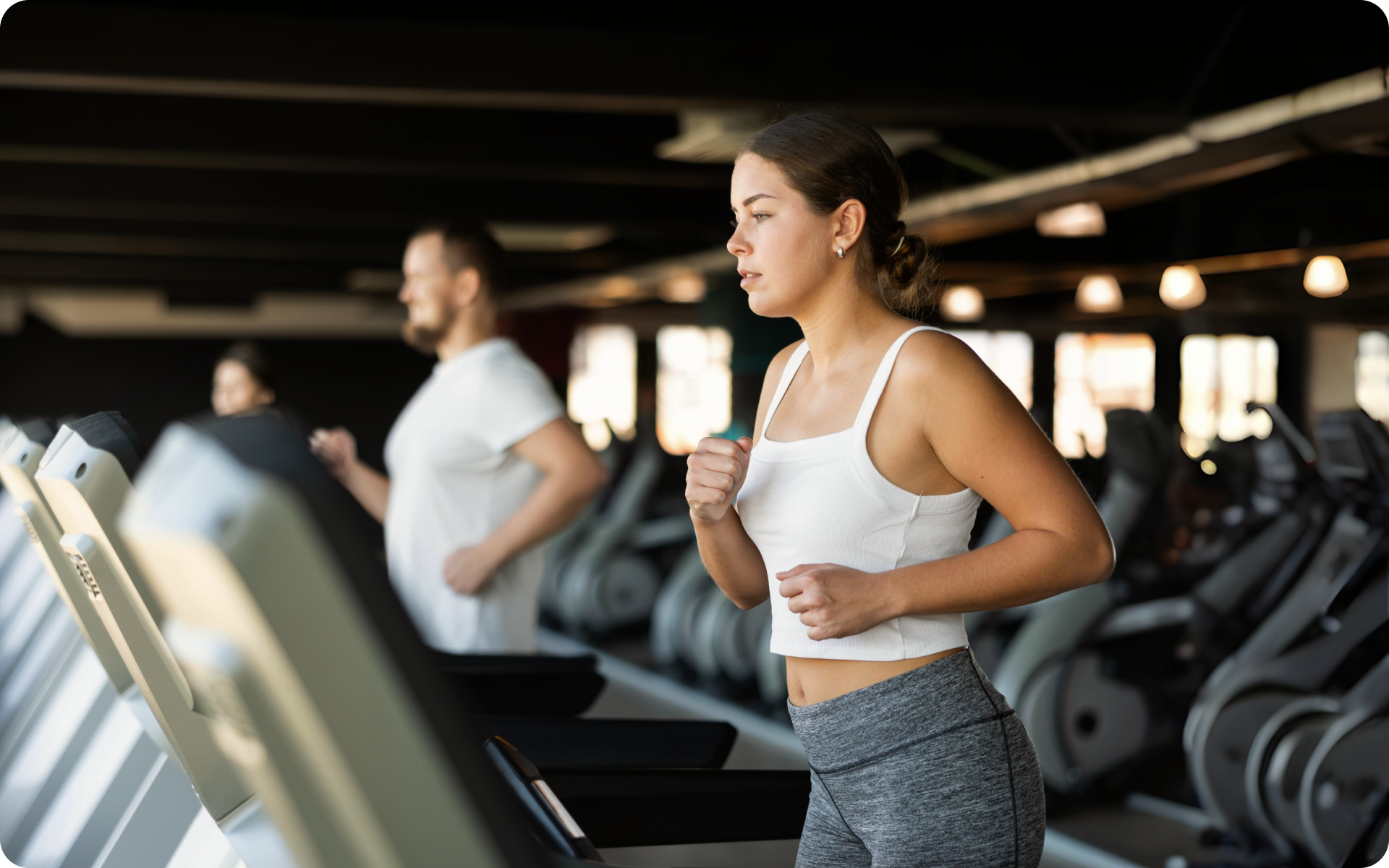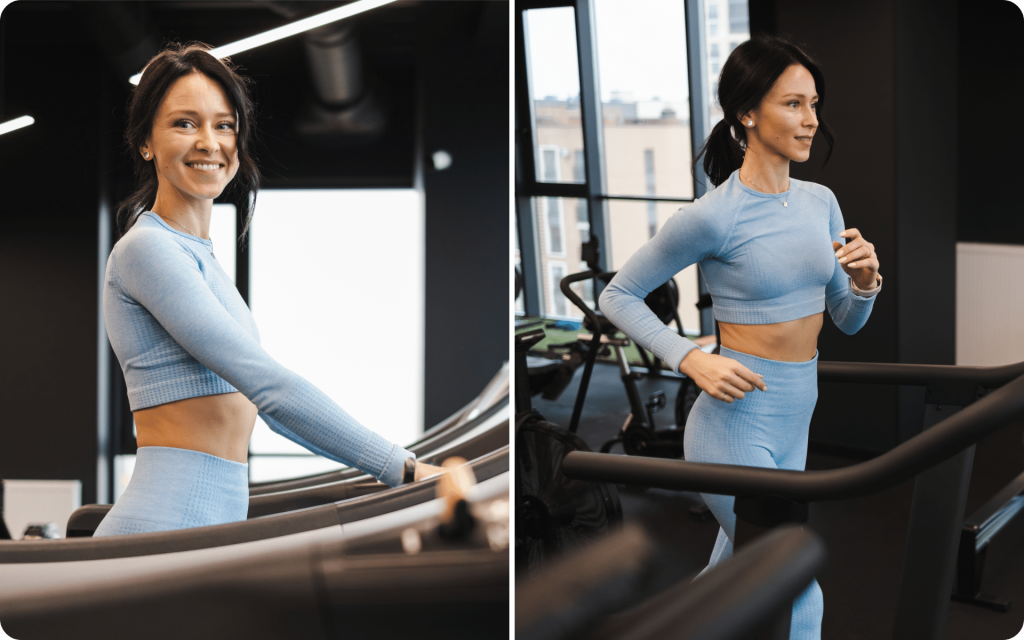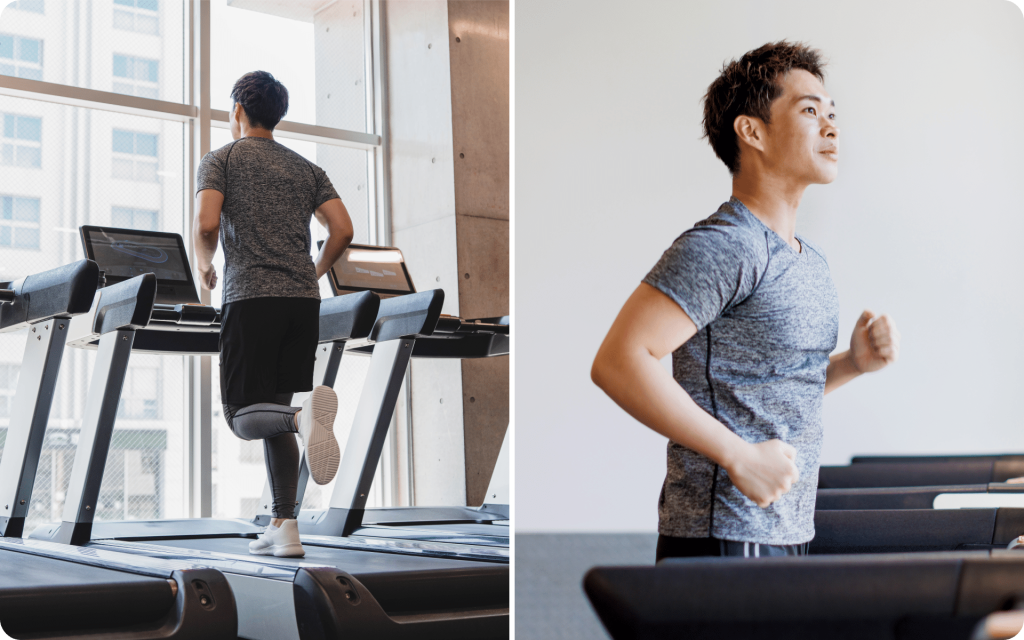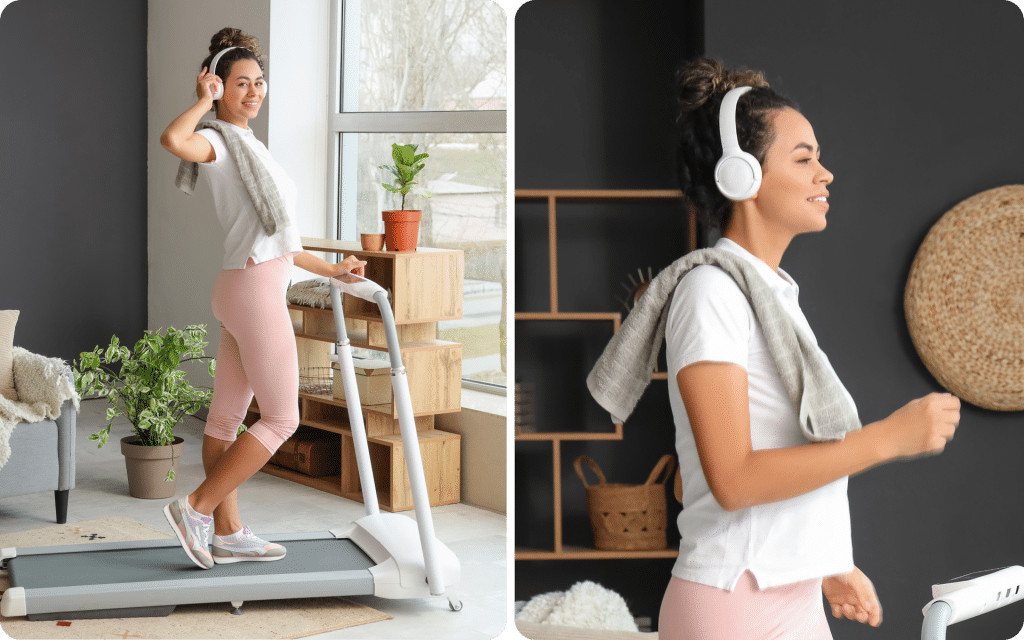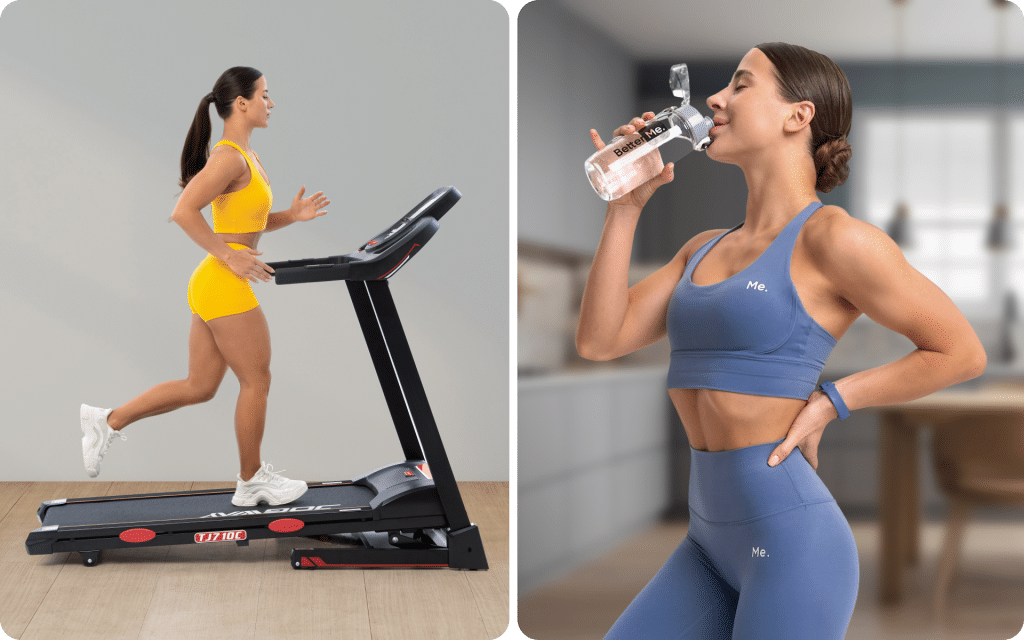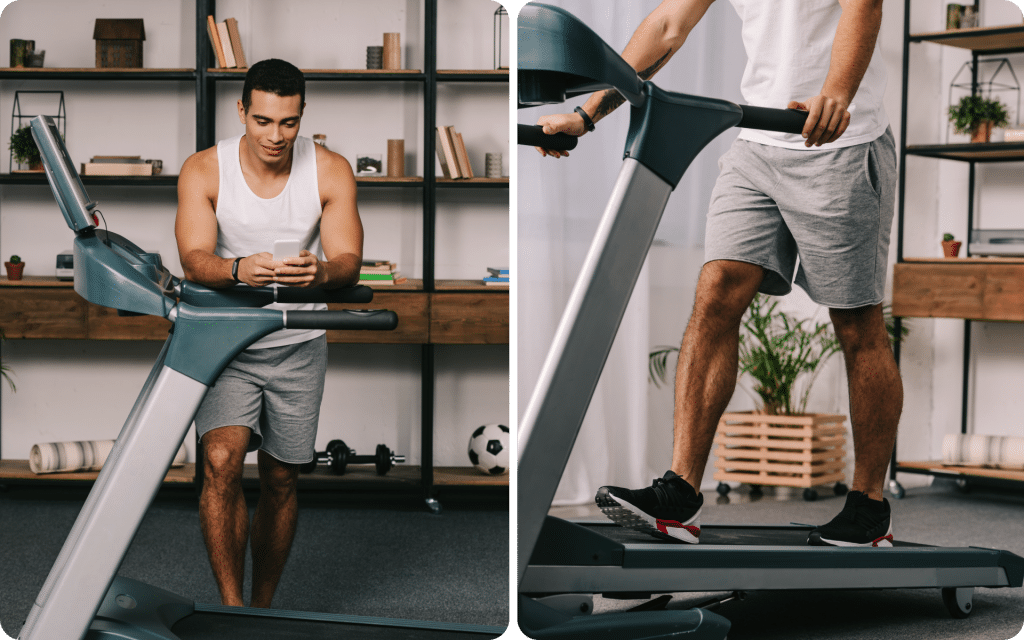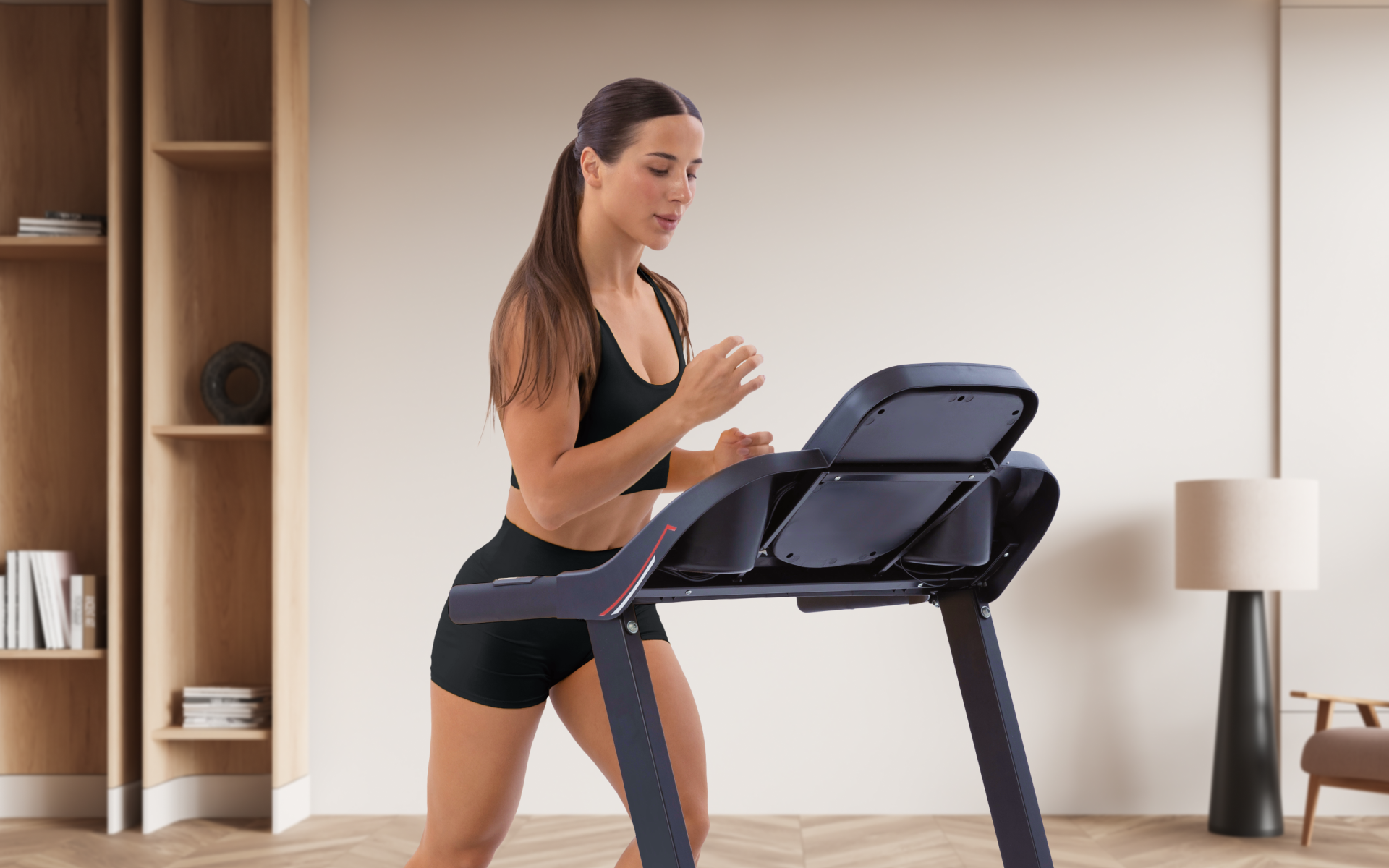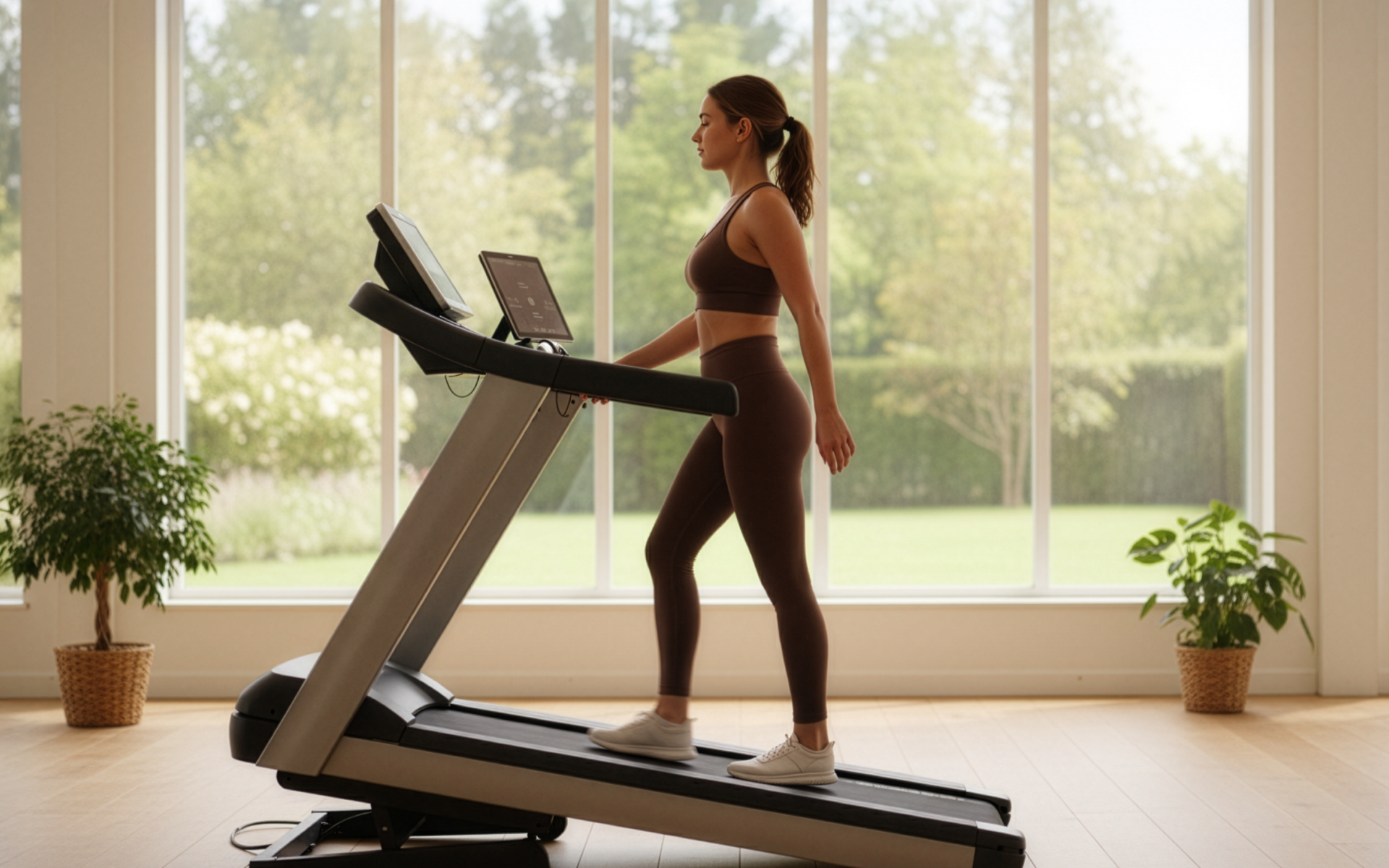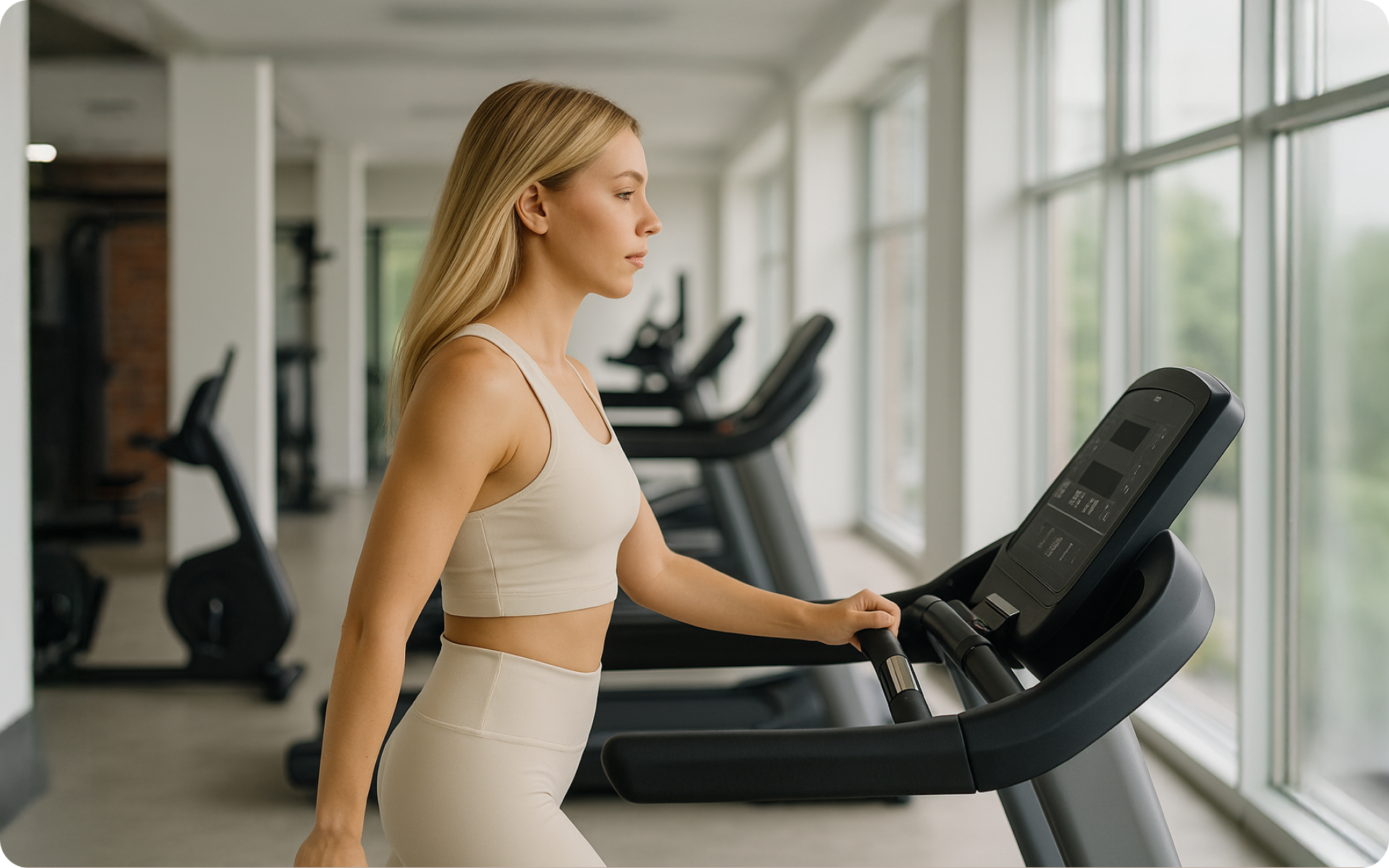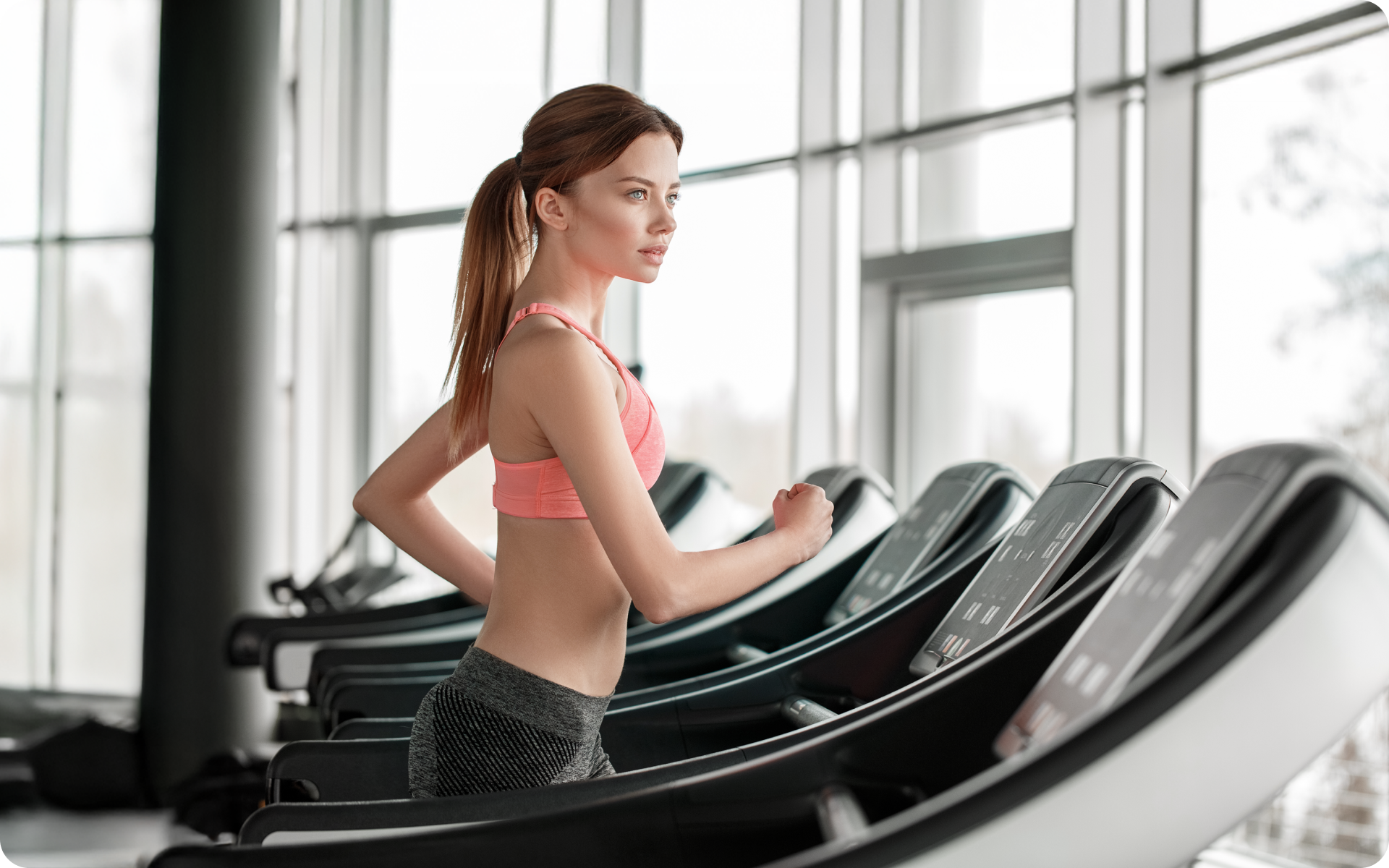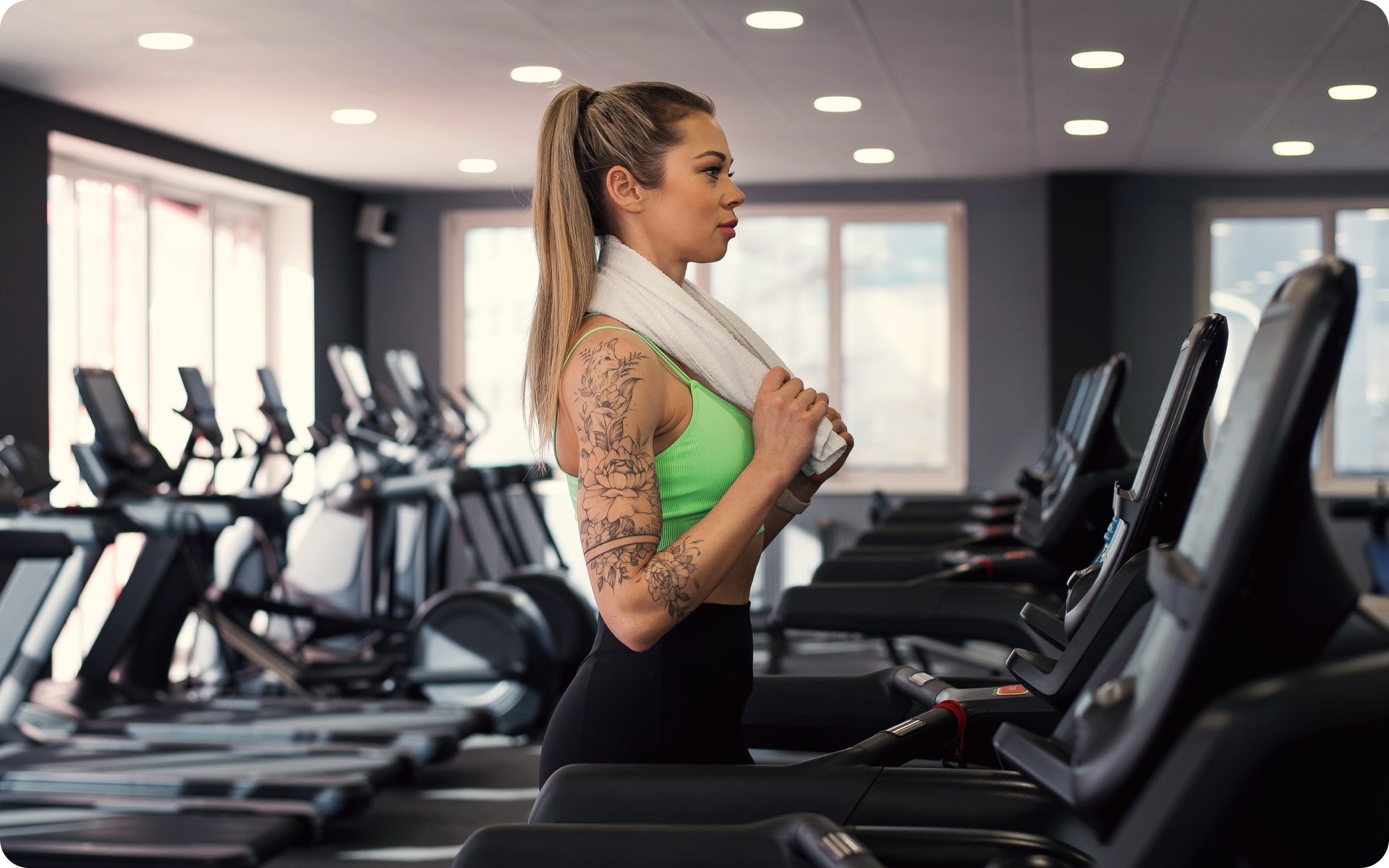Walking outdoors provides variety, works more stabilizing muscles, and engages your senses. On the other hand, treadmills offer convenience, controlled conditions, and can force you to hold a steady pace, which some people find useful for training.
Both are great forms of exercise and each has its own benefits. However, many people find it surprisingly more difficult to walk on a treadmill than outside. In this article, we’ll explore the reasons why that might be.
Why Is Walking on a Treadmill Harder Than Walking Outside?
Walking is one of the simplest and most natural forms of exercise. But if you’ve ever stepped onto a treadmill and found it harder than walking outside, you’re not alone. There are solid, science-backed reasons for this disconnect. Let’s break it down.
You’re Making Biomechanical Adjustments
When you walk on a treadmill, your body moves differently compared to walking on solid ground. The treadmill belt moves under you, so you’re not pushing off the ground the same way. This means your hamstrings don’t work as much, while your quads (the muscles on the front of your thighs) take on more of the load.
In addition, your stride may naturally shorten on a treadmill without you realizing it. This happens because the belt controls your foot placement, and your body adjusts to that movement. Even small changes in how your muscles are used can make walking feel less efficient and more tiring.
You Have to Maintain a Consistent Pace
Outside, your walking pace changes without much thought. You speed up when you’re energized and slow down when you’re tired. On a treadmill though, the speed is set and stays constant. Your body doesn’t get those natural moments of recovery where you may unconsciously slow down. Over time, this can make even a comfortable pace feel increasingly difficult.
This constant pacing is particularly demanding on your cardiovascular system as it doesn’t get the same ebb and flow of effort that happens during outdoor walking.
The Monotony Can Wear You Down
The repetitiveness of walking on a treadmill can contribute to mental fatigue, which makes your workout feel physically harder. Outside, you have changing scenery, fresh air, and natural distractions such as trees, people, and animals. These help occupy your mind and even improve your mood during a walk (1).
However, on a treadmill, you’re staring at a screen or a wall for extended periods. This lack of stimulation can make each step feel longer and more effortful. Many people underestimate how much the mental aspect of exercise influences the way their bodies feel.
Reasons why BetterMe is a safe bet: a wide range of calorie-blasting workouts, finger-licking recipes, 24/7 support, challenges that’ll keep you on your best game, and that just scratches the surface! Start using our app and watch the magic happen.
The Machine’s Calibration May Not Be Accurate
Not all treadmills are perfectly calibrated. When the machine says you’re walking 3 miles per hour, this speed may not be exact. If the treadmill is slightly faster than what you’re used to outside, even by a small amount, it can make you feel like you’re working harder than you should be.
This issue is further complicated by how your brain perceives effort. When you’re outside, factors such as breeze or movement around you can distract you from focusing on how hard you’re working. On a treadmill, all the attention is directed toward maintaining your speed, which can make the effort seem greater.
The Treadmill Doesn’t Work Your Stabilizer Muscles to the Same Extent
When you walk outdoors, the terrain naturally varies. Even small bumps, slopes, or uneven pavement force your stabilizer muscles to engage. These are the smaller muscles that help you balance and control movement (2). On a treadmill, the surface is flat and predictable, which means these muscles aren’t as active.
Without the stabilizers contributing as much, the larger muscles such as your quads may feel more strain earlier. This can make you feel fatigued faster, even though you’re working mostly the same muscle groups.
You Miss out on Natural Cues That Help You Walk
When you’re walking outside, your senses are constantly engaged. You feel the ground under your feet, notice the wind on your skin, and adjust to visual cues like changing inclines or approaching corners. These natural inputs help you pace yourself without realizing it.
On a treadmill, those environmental cues are missing. The environment is static, and your body relies purely on internal cues such as how tired your legs feel or how fast the belt is moving. This lack of external feedback can make the effort feel harder, even if you’re walking at the same speed as you would outside. If you’re curious about how long should you run on the treadmill, check out our earlier article.
Read more: The Powerful Benefits Of Walking On A Treadmill For 30 Minutes Every Day
Why Am I Slower on the Treadmill Than Outside?
If you feel slower on the treadmill compared to outdoors, you’re not imagining it. This is actually quite common, and it boils down to a mix of physiological, psychological, and mechanical factors. Here’s what’s really happening.
- Your Perception of Speed Changes Indoors
One of the disadvantages of treadmill running is that you lack the visual cues you rely on outside to gauge speed. When you’re running or walking outside, the scenery moves past you, and you see your path stretching ahead. This gives your brain a sense of momentum and progress.
On a treadmill, you’re stationary. The belt moves under you, but visually, nothing changes. This can make the same pace feel slower than it would outside.
- Your Stride Mechanics May Be Different
Treadmills slightly alter the way you move. Outdoors, you rely on your body to propel you forward with every step. This action naturally activates your hamstrings (the muscles at the back of your thighs) more. On a treadmill, the moving belt helps with that forward motion. Without as much demand on your hamstrings, your stride can unconsciously shorten, which makes your movement feel less powerful. A shorter stride often translates to feeling slower.
- Consistent Pacing Feels Different
Outside, your pace naturally fluctuates depending on the terrain and how you feel. You may speed up downhill or slow down when you’re tired, often without realizing it. However, on a treadmill, the speed remains fixed unless you adjust it. That constant pace can feel more rigid and effortful, making the speed seem slower than it would outdoors, where adjustments happen naturally.
- Lack of Wind Resistance Affects Effort Perception
Running or walking outside involves pushing against air resistance, even if it’s light. This resistance can subtly affect your perception of effort and speed (3). On a treadmill, there’s no wind resistance, but some runners report that the lack of forward airflow makes them feel less dynamic, as though they aren’t moving fast enough.
- Mental Factors Play a Role
The monotony of the treadmill can make your workout feel longer and slower. Without the stimulation of changing scenery, your mind focuses more on the effort and the clock. This heightened awareness of time and exertion can create the illusion that you’re moving slower, even if the pace matches your outdoor efforts.
Curious about how much time you really need on the treadmill? Don’t guess—check out our full guide on how long you should run on the treadmill based on your goals and fitness level.
Why Do I Burn More Calories on the Treadmill than Outside?
Burning more calories on the treadmill versus outside can be influenced by many factors. Much of what you’re seeing comes down to factors such as pace control, incline adjustments, and how calorie burn is estimated by machines. Outside, you may actually be working harder due to wind resistance and muscle engagement, but this may not reflect in a straightforward calorie count.
How Calorie Burn Is Estimated
First, you need to understand how calorie burn is calculated. Most modern treadmills use built-in algorithms that are based on speed, time, weight, and occasionally heart rate to estimate how many calories you’re burning. However, these values can be flawed as they rely on general averages. They don’t account for your unique physiology or the efficiency of your movement.
When you’re walking or running outside, on the other hand, you don’t have a machine displaying calorie data. You may rely on fitness trackers or apps that make similar estimations. However, these devices are also limited by algorithms and are often less precise than they seem.
Does the Treadmill Actually Make You Burn More?
The treadmill itself doesn’t directly cause you to burn more calories compared to being outdoors, but certain conditions can create that impression.
- Controlled Environment: On the treadmill, factors such as weather, wind, and terrain variability are eliminated. Without wind resistance, you’re working slightly less to push forward. However, treadmills can compensate for this when you add an incline or increase the speed, which increases your energy expenditure.
- Incline Option: Many people use the incline setting on a treadmill to simulate hill walking or running, which boosts calorie burn compared to flat terrain. Outdoors, the incline varies naturally, but it may not always mimic the steepness or duration you program on a treadmill.
- Consistent Running or Walking Pace: A treadmill keeps you at a steady pace. Outside, your speed naturally fluctuates depending on your energy, distractions, or changes in terrain. Therefore, maintaining a consistent treadmill pace could lead to slightly higher energy expenditure over time.
Nuances That Affect Calorie Burn Differences
Several nuances might explain small differences, or why the treadmill display might misrepresent calorie burn compared to an outdoor workout:
- Incline Calibration: On the treadmill, incline settings can lead to a higher intensity workout, which often isn’t replicated outdoors unless you’re walking or running in a hilly area. The steeper the incline, the more energy you use as your body has to work harder against gravity.
- Unaccounted Effort Outdoors: When you’re outside, you’re likely engaging stabilizer muscles more to handle uneven ground or incline variations, which contributes to calorie burn. In addition, factors such as wind resistance slightly increase the effort needed for forward motion, even at low levels, which is often unaccounted for indoors.
- Perception of Effort: On a treadmill, because your motion is assisted somewhat by the moving belt, your perceived exertion may differ from what you experience outside where you actively push yourself forward. However, the machine’s display can reflect a higher calorie burn if using incline or faster speeds.
Are the Numbers on the Treadmill Accurate?
This is where things get tricky. Many treadmills overestimate calorie burn. They don’t account for individual factors such as your muscle mass, metabolic efficiency, or fitness level. For example, someone who is new to exercise will likely burn more calories than a seasoned runner at the same speed as their body is less adapted to the effort.
Similarly, many treadmills use weight as a factor in their calculations. Heavier individuals may see inflated calorie-burn estimates because the system assumes that more body weight always equals more energy expenditure, which isn’t entirely true.
Read more: 30-Minute Treadmill Workout For Beginners
Why Is Running Outside More Tiring Than the Treadmill?
Running outside feeling more tiring than treadmill may be an individual experience, but there are some factors that could contribute to this feeling:
- Wind Resistance – When you run outside, you’re constantly moving through the air, which creates wind resistance (3). Even a slight breeze increases the effort your body has to exert to push forward. On a treadmill, there’s no wind resistance, so your workload is reduced.
- Uneven Terrain – Outdoor surfaces such as pavements, trails, or grass are rarely uniform. Your stabilizer muscles (such as those in your hips and ankles) work harder to adjust to these variations. This added engagement can make the run feel more taxing (2).
- Self-Propulsion – Outside, your body has to provide all the forward momentum with every step. This heavily activates muscles such as your hamstrings to push off the ground. On a treadmill, the belt helps move your feet back, which reduces the work your muscles have to do.
- Visual and Spatial Feedback – Outdoors, you have changing scenery that gives your body visual cues about speed and distance. This stimulation can sometimes push you to work harder. On a treadmill, the controlled environment can reduce this effect, allowing you to pace yourself more consistently.
- Environmental Conditions – Running outside exposes you to weather conditions such as heat, humidity, or cold. These factors demand extra energy as your body works to regulate its temperature (4), making the run feel harder than the climate-controlled conditions of most gyms.
- Pacing Variability – Outdoors, you naturally adjust your pace based on terrain, fatigue, or distractions. These constant shifts can lead to bursts of higher effort. On a treadmill, the speed is fixed, so you don’t deal with these unpredictable fluctuations.
- Incline Challenges – Outdoor runs often include natural inclines that you can’t avoid. Whether it’s hills or gentle slopes, running uphill requires more energy (5). On a treadmill, the incline is optional and can be manually adjusted based on how much effort you’re prepared to put in.
- Mental Fatigue from Navigating – Running outside requires additional mental effort to stay aware of your surroundings. Watching for obstacles, traffic, or uneven ground adds cognitive load. On a treadmill, this isn’t an issue, allowing you to focus solely on the exercise.
Is It Better to Run Outside or on a Treadmill for Weight Loss?
The best form of running for weight loss is one you’ll stick to consistently. Weight loss ultimately comes down to creating a calorie deficit, and both outdoor and treadmill running can help you achieve this. The choice depends on your preferences, lifestyle, and access to resources.
- Running Outside
Running outdoors naturally engages more muscles. Uneven terrain, wind resistance, and natural inclines all work together to challenge your body more. This can translate into slightly higher energy expenditure during your workout (5).
In addition, being outside often feels less monotonous due to changing scenery, which can help you stay motivated to push harder or run longer.
That being said, the weather can be a drawback. Extreme heat, cold, or rain may reduce the frequency or intensity of your runs. Bad footing or safety concerns such as traffic can also make outdoor runs a challenge.
Want to spring-clean your diet, skyrocket your self-confidence, and shatter your insecurities? Check out the BetterMe: Health Coaching app and set this plan in motion!
- Running on a Treadmill
A treadmill provides a controlled environment. You can run without worrying about weather, traffic, or uneven surfaces. This consistency can make it easier to stick to a routine, which is essential for weight loss. Some people find the ability to precisely control speed and incline helpful for structured workouts, such as interval training, which can boost calorie burn (6).
However, treadmill running burns slightly fewer calories per mile on average compared to outdoor running (6), partly because there’s no wind resistance and the belt assists in foot motion. To counterbalance this, you can add a slight incline (e.g., 1-2%) to simulate outdoor conditions and increase calorie expenditure.
- Which is Better for Weight Loss?
Neither option is inherently “better” for everyone and it depends on your circumstances and what will keep you consistent over time:
- Choose Outside Running If: You enjoy being in nature, have access to safe running areas, and like the extra challenge of varying terrain. It can improve muscle activation and may burn slightly more calories per session.
- Choose Treadmill Running If: You prefer consistency, need a weatherproof option, or want precise control over your workouts. It’s also great for beginners who may want a safe, predictable environment to build endurance.
Walking on a treadmill is generally better than walking in place as it engages more muscles and mimics natural walking motion more closely. The treadmill encourages a proper stride and forward movement, which helps with calorie burn and muscle activation. Walking in place may be suitable in limited situations, but it offers less overall benefit. Yes, individuals with higher body weight burn more calories on a treadmill because calorie burn is directly tied to body mass (7). Moving a heavier body requires more energy, which increases the number of calories burned during the activity. Check out our guide – HIIT Treadmill Workout For Fat Loss – and learn how to get the most out of your treadmill workout. You may sweat more on a treadmill because indoor environments often lack airflow. Running or walking outside exposes you to natural wind, which helps your body cool down. On a treadmill, the heat generated by your body has less opportunity to dissipate, which makes you sweat more. A good speed for walking on a treadmill to promote weight loss is typically between 3 and 4 miles per hour. This corresponds to a brisk pace, which elevates your heart rate while remaining sustainable for longer durations. Adjust your speed based on your fitness level and aim for consistency over time. Check out our beginner-friendly 20-Minute Treadmill Workout for fat loss you can incorporate into your routine.Frequently Asked Questions
Is it better to walk on a treadmill or walk in place?
Do fat people burn more calories on the treadmill?
Why do I sweat more on the treadmill than outside?
What is a good speed to walk on a treadmill to lose weight?
The Bottom Line
Why is it harder to walk on a treadmill than outside? There are differences in environment, biomechanics, and perception between the two. Treadmills offer a controlled setting that lacks natural elements such as wind resistance and varied terrain, which can make outdoor walking feel more dynamic. However, a treadmill’s consistency and convenience are ideal for focused workouts. Both options have their own benefits, and the best choice depends on your goals, preferences, and fitness level.
DISCLAIMER:
This article is intended for general informational purposes only and does not serve to address individual circumstances. It is not a substitute for professional advice or help and should not be relied on for making any kind of decision-making. Any action taken as a direct or indirect result of the information in this article is entirely at your own risk and is your sole responsibility.
BetterMe, its content staff, and its medical advisors accept no responsibility for inaccuracies, errors, misstatements, inconsistencies, or omissions and specifically disclaim any liability, loss or risk, personal, professional or otherwise, which may be incurred as a consequence, directly or indirectly, of the use and/or application of any content.
You should always seek the advice of your physician or other qualified health provider with any questions you may have regarding a medical condition or your specific situation. Never disregard professional medical advice or delay seeking it because of BetterMe content. If you suspect or think you may have a medical emergency, call your doctor.
SOURCES:
- Nature-based outdoor activities for mental and physical health: Systematic review and meta-analysis (2021, ncbi.nlm.nih.gov)
- Biomechanics and energetics of walking on uneven terrain (2013, ncbi.nlm.nih.gov)
- Still air resistance during walking and running (2023, ncbi.nlm.nih.gov)
- Thermoregulation and Exercise in the Heat and Cold (n.d., physio-pedia.com)
- A Paradigm of Uphill Running (2013, ncbi.nlm.nih.gov)
- Effects of six weeks outdoor versus treadmill running on physical fitness and body composition in recreationally active young males: a pilot study (2022, ncbi.nlm.nih.gov)
- Metabolism (2023, betterhealth.vic.gov.au)
